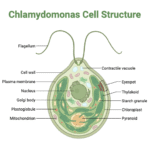Why is anaerobic respiration considered an inefficient process?

Anaerobic Respiration
Anaerobic respiration is a biological process in which cells generate energy without using oxygen. Instead, it relies on alternative molecules to accept electrons at the end of the electron transport chain. This process typically produces less energy compared to aerobic respiration. Anaerobic respiration can result in byproducts like lactic acid in animals or ethanol and carbon dioxide in yeast. It’s commonly used by organisms in environments where oxygen is scarce or during intense physical activity when oxygen supply can’t meet the demand.
What are the two types of anaerobic respiration?
What are the two types of anaerobic respiration?
Which statement best compares aerobic and anaerobic respiration?
Which statement best compares aerobic and anaerobic respiration?
What is the main advantage of aerobic respiration? Of anaerobic respiration?
What is the main advantage of aerobic respiration? Of anaerobic respiration?
what is the difference between aerobic and anaerobic respiration
what is the difference between aerobic and anaerobic respiration
What is anaerobic respiration?
What is anaerobic respiration?
Where does anaerobic respiration occur?
Where does anaerobic respiration occur?
What do aerobic respiration and anaerobic respiration have in common?
What do aerobic respiration and anaerobic respiration have in common?
Which is required for both anaerobic respiration and aerobic respiration?
Which is required for both anaerobic respiration and aerobic respiration?
What happens during anaerobic cellular respiration?
What happens during anaerobic cellular respiration?




